Study of the Thermal History upon Residual Stresses during the Dry Drilling of Inconel 718
Abstract
:1. Introduction
2. Materials and Methods
2.1. Drilling Tests
2.2. X-ray Diffraction Analysis
- lattice planes;
- Mn K anode ( = 0.210 nm);
- Acquisition time of 60 s per diffraction peak.
2.3. Physical Data for the Simulation
3. Results and Discussion
3.1. Thermal History of the Hole Surface
- A temperature peak caused by the passage of the drill tip;
- A thermal plateau induced by the drill tool and chip evacuation;
- An overheating phase generated by the rising temperature of the chips;
- A temperature stabilization phase after the drill tip output (time “O”);
- Air cooling after the upward ejection of the drill tool (time “E”).
3.2. Numerical Modeling of the Overheating Phenomenon
3.3. 3D Thermo-Elasto-Plastic Simulation of Residual Stresses
3.4. Investigation of Residual Stress Generation
4. Conclusions
- A thermal history in five phases was identified by means of temperature measurements with an overheating of approximately 500 C on the hole surface before the output of the drill tip;
- An improved version of a 3D thermo-viscoplastic modeling was developed to show that this overheating is triggered by the progressive decrease in the Inconel 718 volume under the cutting zone.
- 3.
- A 3D thermo-elasto-plastic simulation including elasticity was proposed to compute the residual stresses induced by the dry drilling of a large depth hole. The loading is made of the thermal expansion due to the temperature field coming from the previous 3D thermo-viscoplastic model.
- 4.
- The comparison between experimental and simulation results shows for the first time that the thermal strain field plays a major role in residual stress generation during the dry drilling of Inconel 718.
- 5.
- The simulation also shows for the first time that the overheating stage induces plastic strains leading to high tensile residual stresses of approximately 900 MPa as we experimentally observed.
Author Contributions
Funding
Institutional Review Board Statement
Informed Consent Statement
Data Availability Statement
Acknowledgments
Conflicts of Interest
Abbreviations
| IR | Infrared |
| TC | Thermocouple |
| XRD | X-ray diffraction |
| Thermal coefficient (W·m·C) | |
| Fourth rank elastic tensor (MPa) | |
| Elastic strain tensor (-) | |
| Elastic strain rate tensor (s) | |
| Plastic strain rate tensor (s) | |
| Thermal strain rate tensor (s) | |
| Exchange coefficient in the drilled hole (W·m·C) | |
| X-ray wavelength (nm) | |
| n | Thermal exponent (-) |
| Scan angle for the XRD analysis () | |
| q | Heat flux (W·m) |
| Cauchy stress tensor (MPa) | |
| von Mises equivalent stress (MPa) | |
| Initial yield stress (MPa) | |
| t | Time (s) |
| Temperature (C) | |
| Average temperature computed in the cutting zone (C) | |
| Temperature in the drilled hole (C) |
References
- Fauvin, F.; Roux, J.C.; Monnet, P.; Feulvarch, E. Fast estimation of the shear stress amplitude for fatigue life analysis of metals. Eur. J. Mech.-A/Solids 2020, 80, 103928. [Google Scholar] [CrossRef]
- Dang-Van, K.; Bignonnet, A.; Fayard, J.L. Assessment of welded structures by a structural multiaxial fatigue approach. Eur. Struct. Integr. Soc. 2003, 31, 3–21. [Google Scholar] [CrossRef]
- Dang-Van, K.; Griveau, B.; Message, O. On a New Multiaxial Fatigue Limit Criterion: Theory and Applications; EGF 3; Brown, M.W., Miller, K.J., Eds.; Mechanical Engineering Pulications: London, UK, 1989; pp. 479–496. [Google Scholar]
- Dudzinski, D.; Devillez, A.; Moufki, A.; Larrouquère, D.; Zerrouki, V.; Vigneau, J. A review of developments towards dry and high speed machining of Inconel 718 alloy. Int. J. Mach. Tools Manuf. 2004, 44, 439–456. [Google Scholar] [CrossRef]
- Wolf, T.; Iovkov, I.; Biermann, D. Influence of a Discontinuous Process Strategy on Microstructure and Microhardness in Drilling Inconel 718. J. Manuf. Mater. Process. 2021, 5, 43. [Google Scholar] [CrossRef]
- Sarıkaya, M.; Gupta, M.K.; Tomaz, I.; Pimenov, D.Y.; Kuntoglu, M.; Khanna, N.; Yıldırım, C.V.; Krolczyk, G.M. A state-of-the-art review on tool wear and surface integrity characteristics in machining of superalloys. CIRP J. Manuf. Sci. Technol. 2021, 35, 624–658. [Google Scholar] [CrossRef]
- Pimenov, D.Y.; Mia, M.; Gupta, M.K.; Machado, A.R.; Tomaz, I.V.; Sarikaya, M.; Wojciechowski, S.; Tadeusz, M.; Kaptonek, W. Improvement of machinability of Ti and its alloys using cooling-lubrication techniques: A review and future prospect. J. Mater. Res. Technol. 2021, 11, 719–753. [Google Scholar] [CrossRef]
- Girinon, M.; Karaouni, H.; Masciantonio, U.; Lefebvre, F.; Jourden, E.; Valiorgue, F.; Rech, J.; Feulvarch, E. Risks related to the lack of lubrication on surface integrity in drilling. Heliyon 2019, 5, e01138. [Google Scholar] [CrossRef] [Green Version]
- Sima, M.; Özel, T. Modified material constitutive models for serrated chip formation simulations and experimental validation in machining of titanium alloy Ti-6Al-4V. Int. J. Mach. Tools Manuf. 2010, 50, 943–960. [Google Scholar] [CrossRef]
- Shet, C.; Deng, X. Residual stresses and strains in orthogonal metal cutting. Int. J. Mach. Tools Manuf. 2003, 43, 573–587. [Google Scholar] [CrossRef]
- Lo, S. An analysis of cutting under different rake angles using the finite element method. J. Mater. Process. Technol. 2000, 105, 143–151. [Google Scholar] [CrossRef]
- Outeiro, J.; Umbrello, D.; M’Saoubi, R. Experimental and numerical modelling of the residual stresses induced in orthogonal cutting of AISI 316L steel. Int. J. Mach. Tools Manuf. 2006, 46, 1786–1794. [Google Scholar] [CrossRef]
- Chen, G.; Ren, C.; Yang, X.; Jin, X.; Guo, T. Finite element simulation of high-speed machining of titanium alloy (Ti-6Al-4V) based on ductile failure model. Int. J. Adv. Manuf. Technol. 2011, 56, 1027–1038. [Google Scholar] [CrossRef]
- Ozcelik, B.; Bagci, E. Experimental and numerical studies on the determination of twist drill temperature in dry drilling: A new approach. Mater. Des. 2006, 27, 920–927. [Google Scholar] [CrossRef]
- Wu, J.; Han, R. A new approach to predicting the maximum temperature in dry drilling based on a finite element model. J. Manuf. Process. 2009, 11, 19–30. [Google Scholar] [CrossRef]
- Nan, X.; Xie, L.; Zhao, W. On the application of 3D finite element modeling for small-diameter hole drilling of AISI 1045 steel. Int. J. Adv. Manuf. Technol. 2016, 84, 1927–1939. [Google Scholar] [CrossRef]
- Abouridouane, M.; Klocke, F.; Döbbeler, B. Characterisation and Modelling of the Machinability of Ferritic-pearlitic Steels in Drilling Operations. Procedia CIRP 2017, 58, 79–84. [Google Scholar] [CrossRef]
- Pang, K.; Wang, D. Study on the performances of the drilling process of nickel-based superalloy Inconel 718 with differently micro-textured drilling tools. Int. J. Mech. Sci. 2020, 180, 105658. [Google Scholar] [CrossRef]
- Bonnet, C.; Pottier, T.; Landon, Y. Development of a multi-scale and coupled cutting model for the drilling of Ti-6Al-4V. CIRP J. Manuf. Sci. Technol. 2021, 35, 526–540. [Google Scholar] [CrossRef]
- Chenegrin, K.; Roux, J.C.; Helfenstein-Didier, C.; Pouvreau, C.; Girinon, M.; Karaouni, H.; Bergheau, J.M.; Feulvarch, E. 3D numerical simulation of heat transfer during dry drilling of Inconel 718. J. Manuf. Process. 2021, 64, 1143–1152. [Google Scholar] [CrossRef]
- Girinon, M.; Valiorgue, F.; Rech, J.; Feulvarch, E. Development of a Procedure to Characterize Residual Stresses Induced by Drilling. Procedia CIRP 2016, 45, 79–82. [Google Scholar] [CrossRef] [Green Version]
- Chenegrin, K. Identification et Modélisation des Phénomènes Thermomécaniques mis en jeu lors du Perçage à sec de L’Inconel 718. Ph.D. Thesis, Université de Lyon, Lyon, France, 2021. [Google Scholar]
- Zemzemi, F. Caracterisation de Modèles de Frottement aux Interfaces Pièce-Outil-Copeau en Usinage: Application au cas de L’usinage des Aciers et de L’Inconel 718. Ph.D. Thesis, École Centrale de Lyon, Écully, France, 2007. [Google Scholar]
- Software SYSWELD®. Reference Manual; ESI Group: Lyon, France, 2020. [Google Scholar]
- Feulvarch, E.; Lacroix, R.; Deschanels, H. A 3D locking-free XFEM formulation for the von Mises elasto-plastic analysis of cracks. Comput. Methods Appl. Mech. Eng. 2020, 361, 112805. [Google Scholar] [CrossRef]
- Wang, H.; Webb, T.; Bitler, J. Study of thermal expansion and thermal conductivity of cemented WC-Co composite. Int. J. Refract. Met. Hard Mater. 2015, 49, 170–177. [Google Scholar] [CrossRef]
- Girinon, M.; Dumont, F.; Valiorgue, F.; Rech, J.; Feulvarch, E.; Lefebvre, F.; Karaouni, H.; Jourden, E. Influence of lubrication modes on residual stresses generation in drilling of 316L, 15-5PH and Inconel 718 alloys. Procedia CIRP 2018, 71, 41–46. [Google Scholar] [CrossRef]

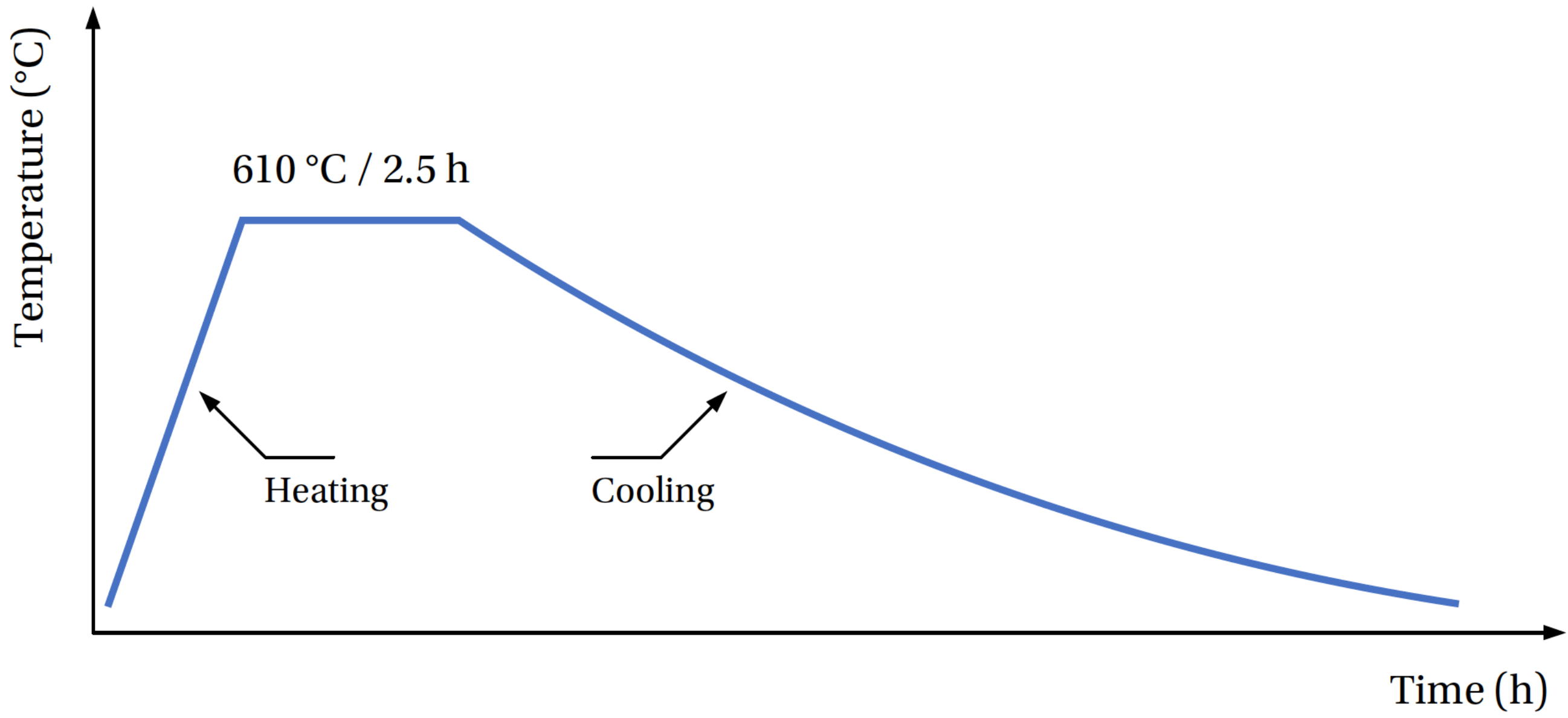



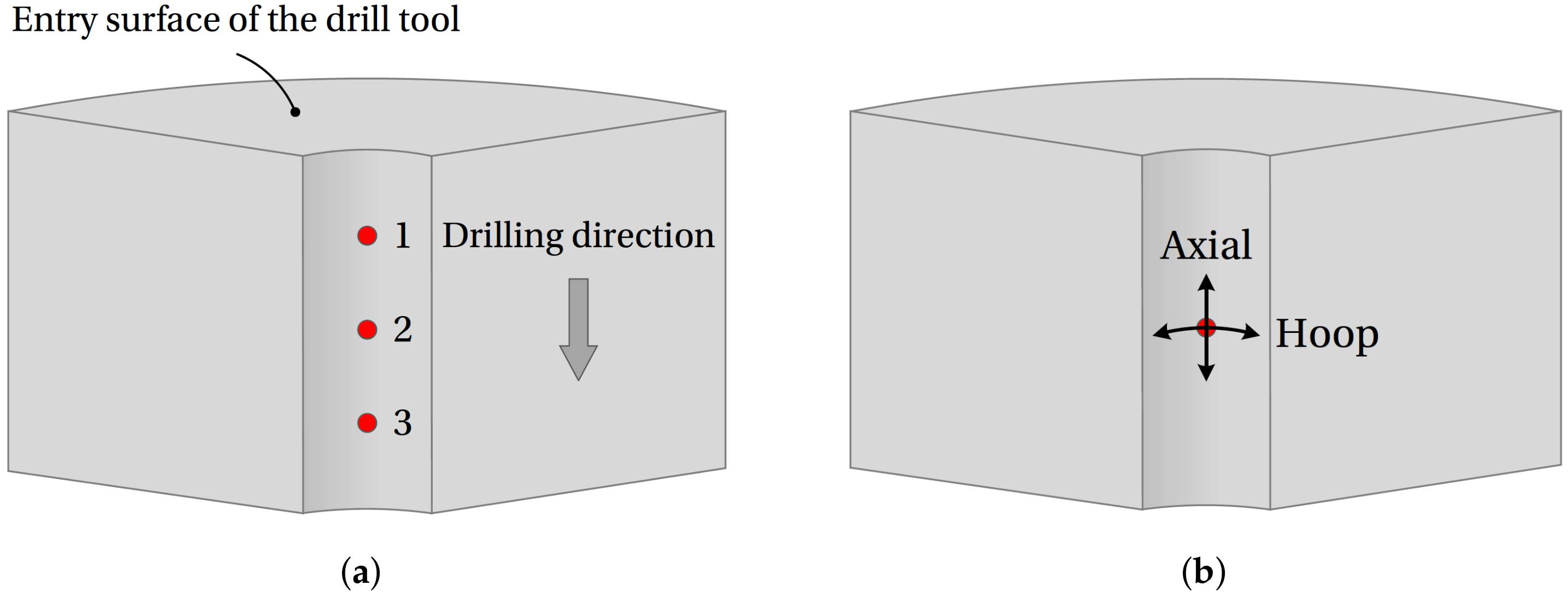
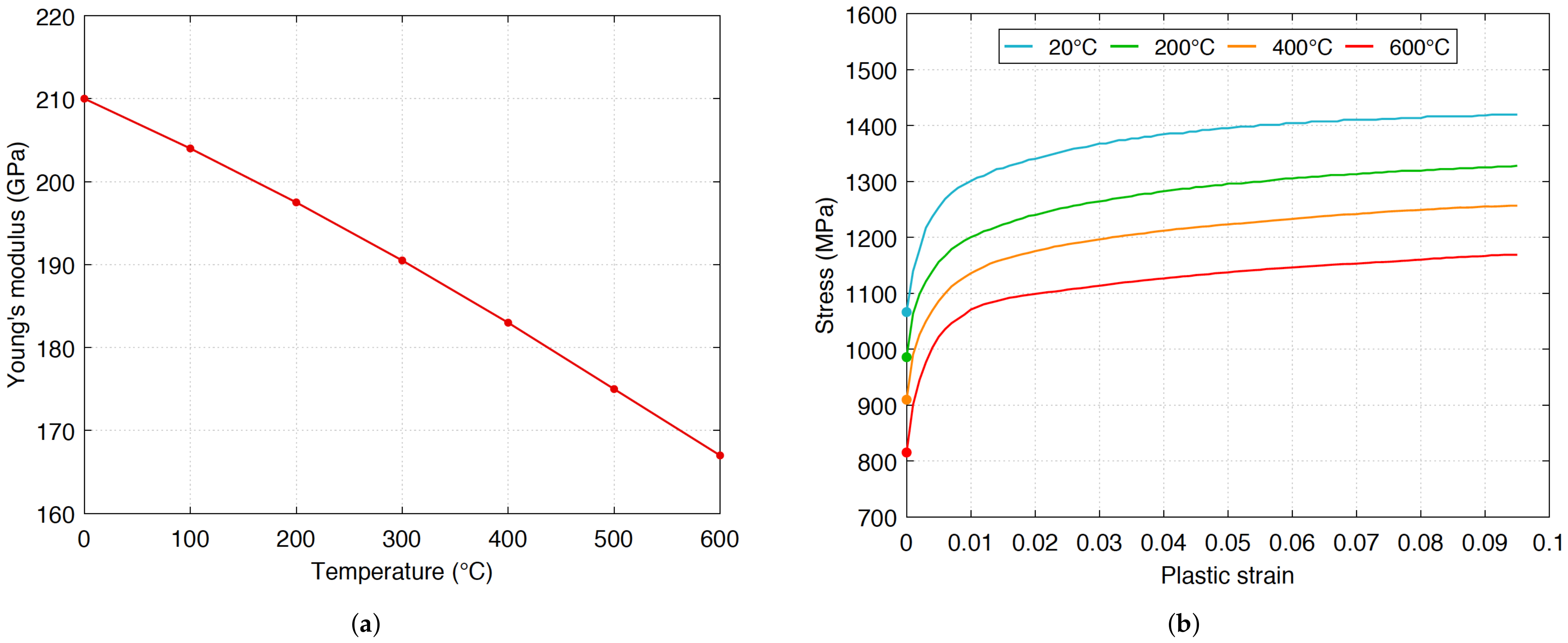
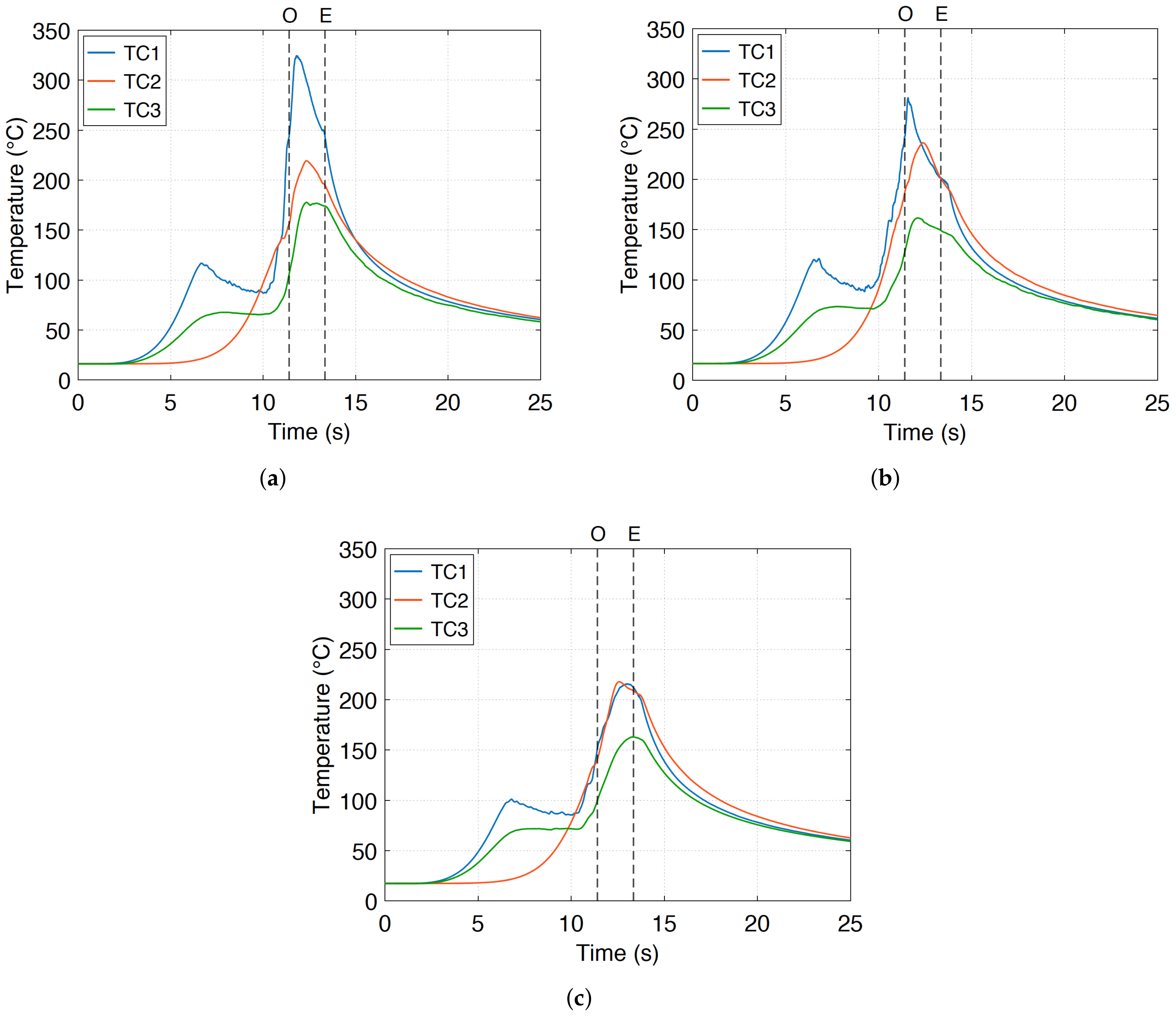
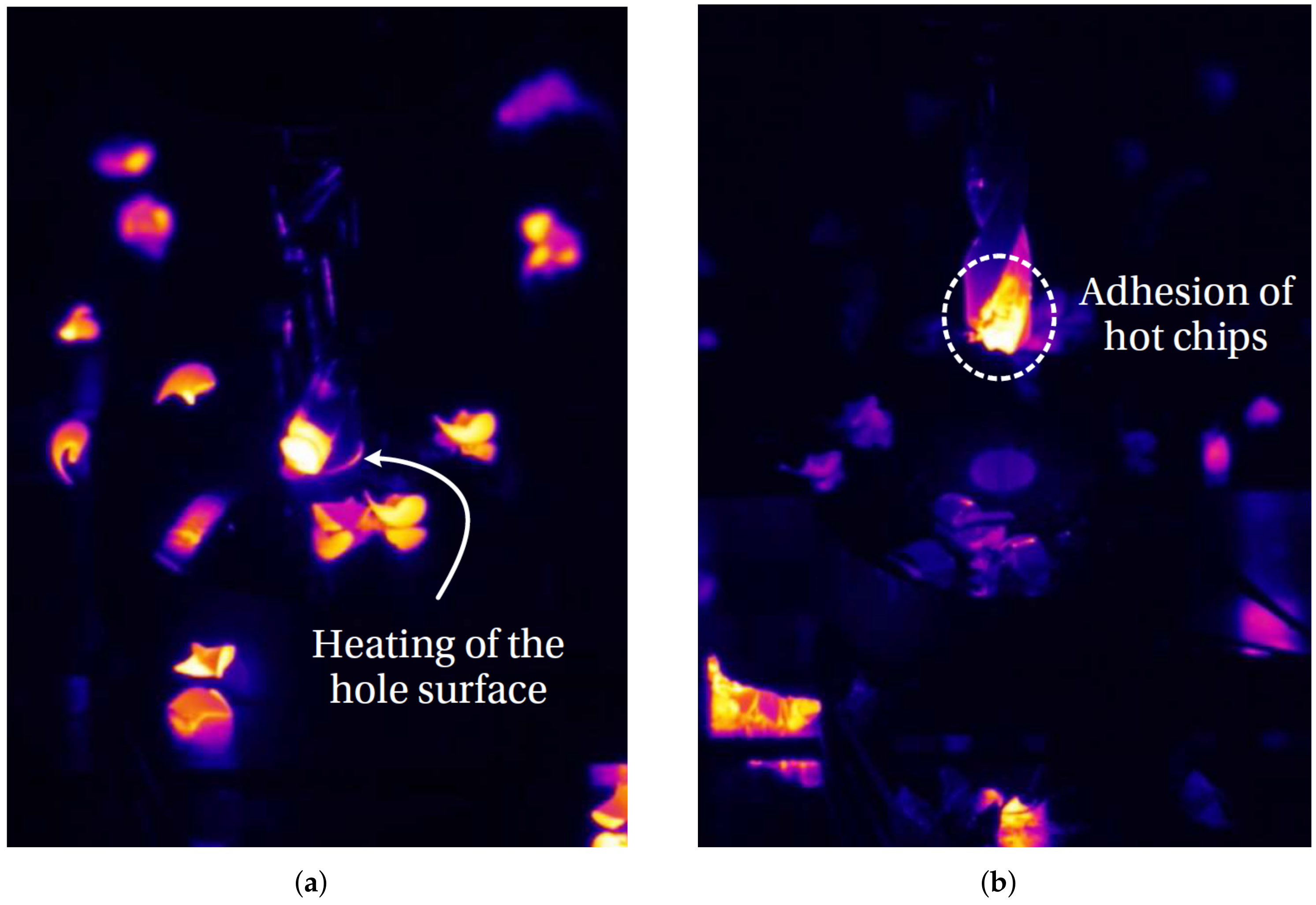
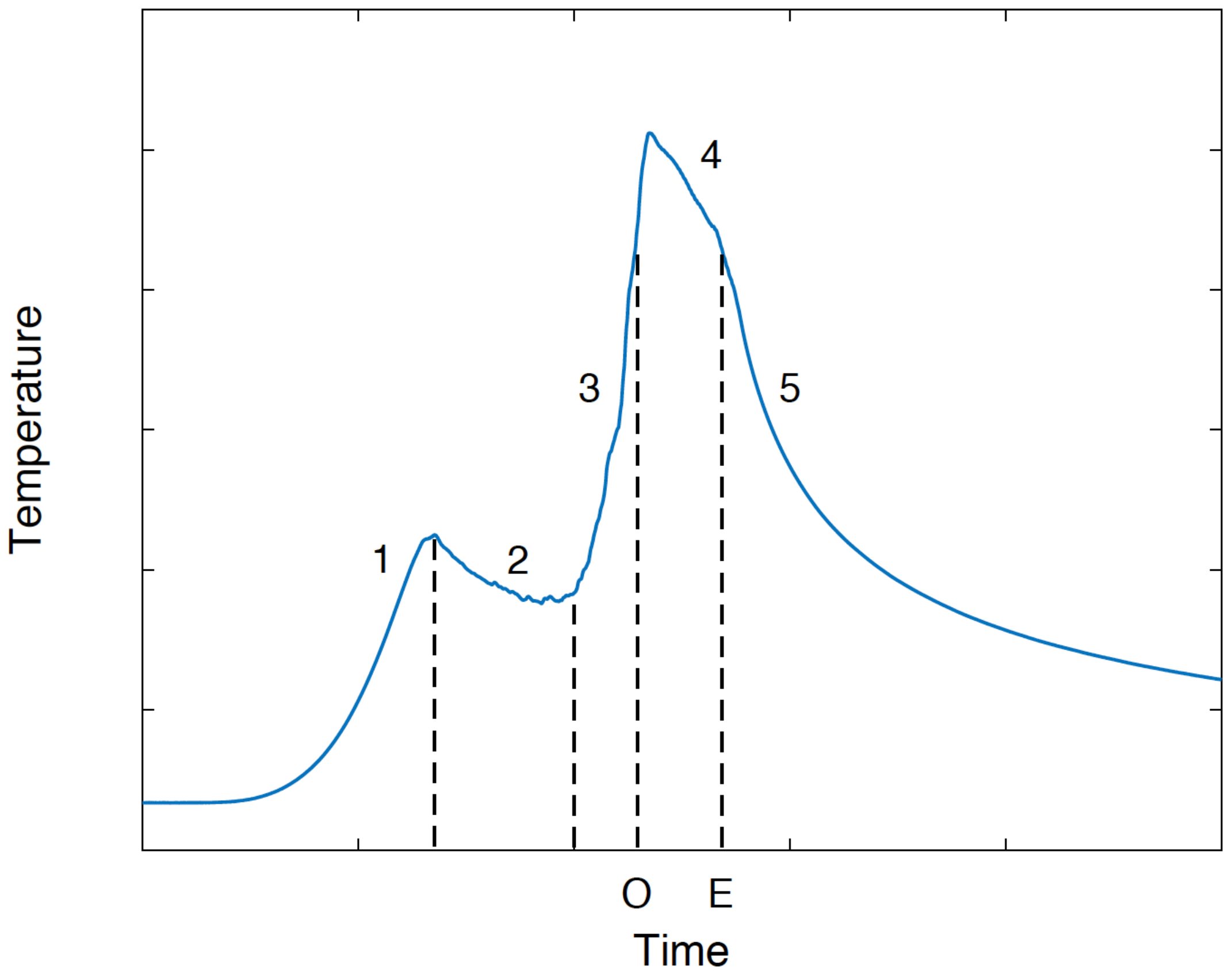
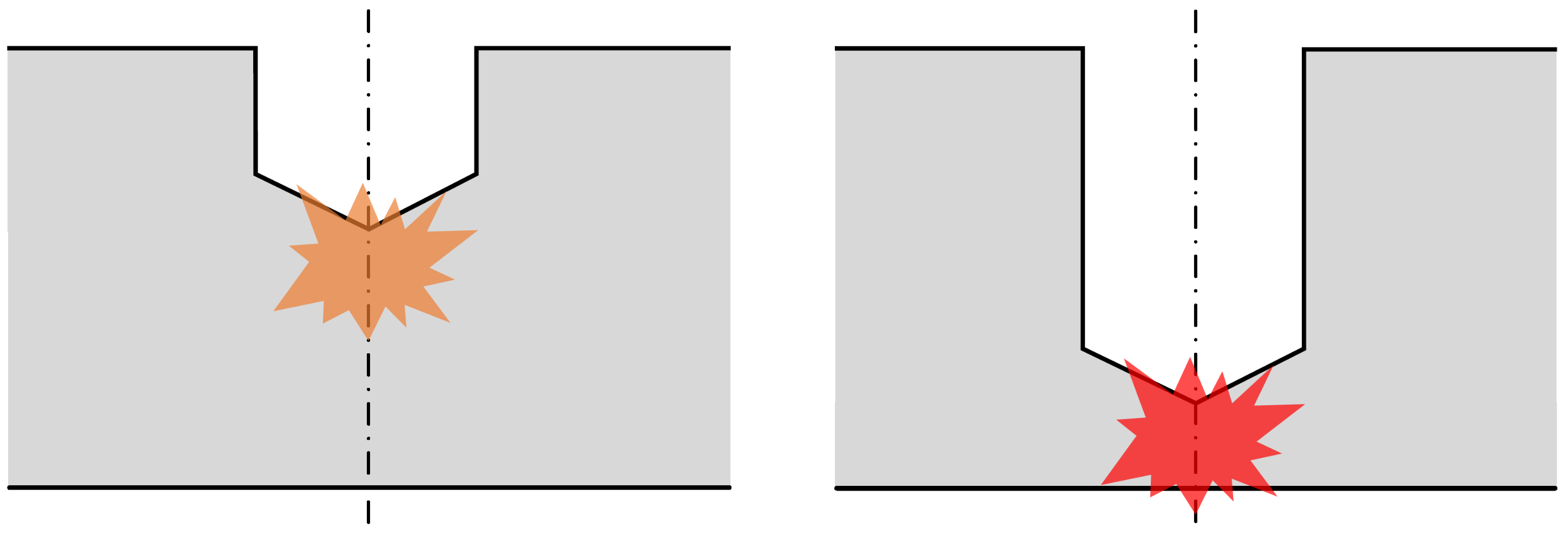
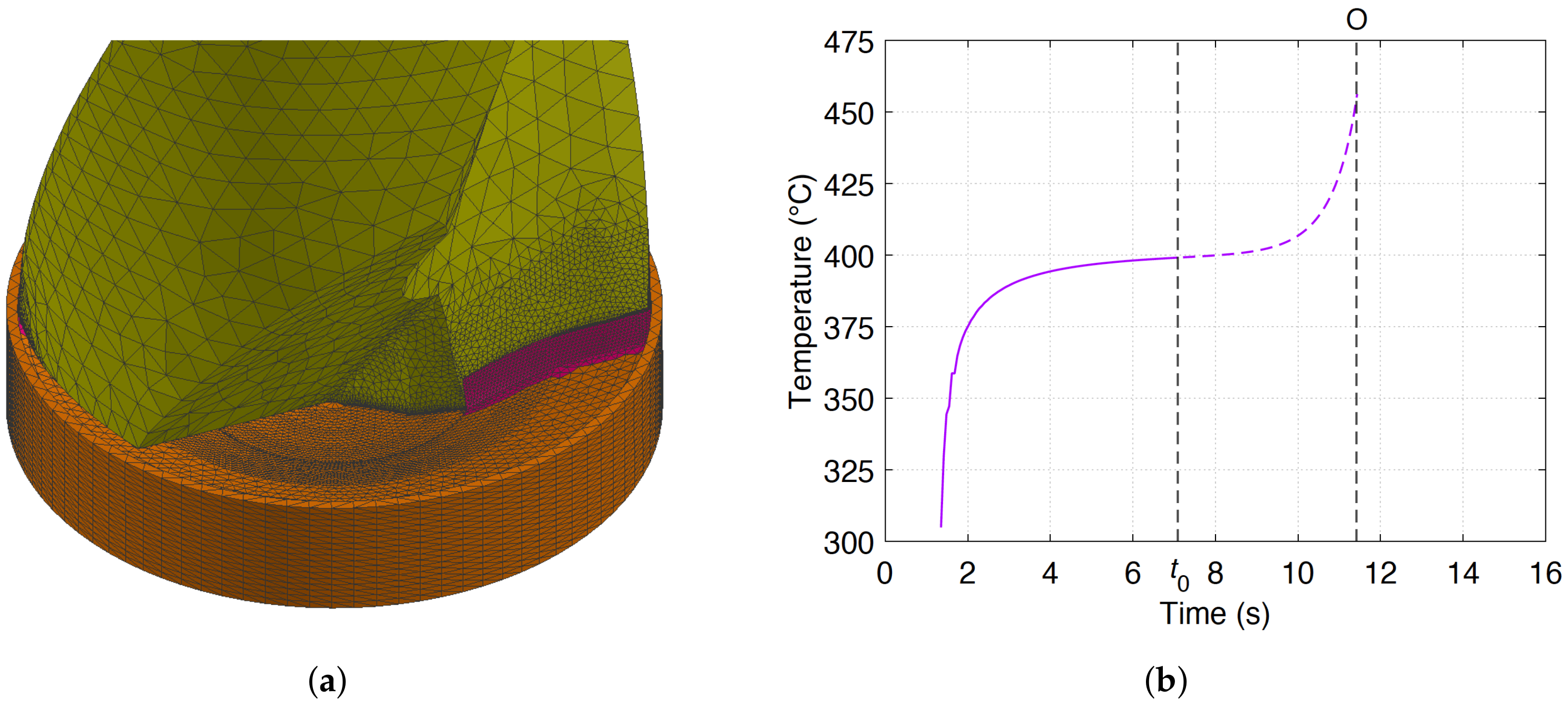
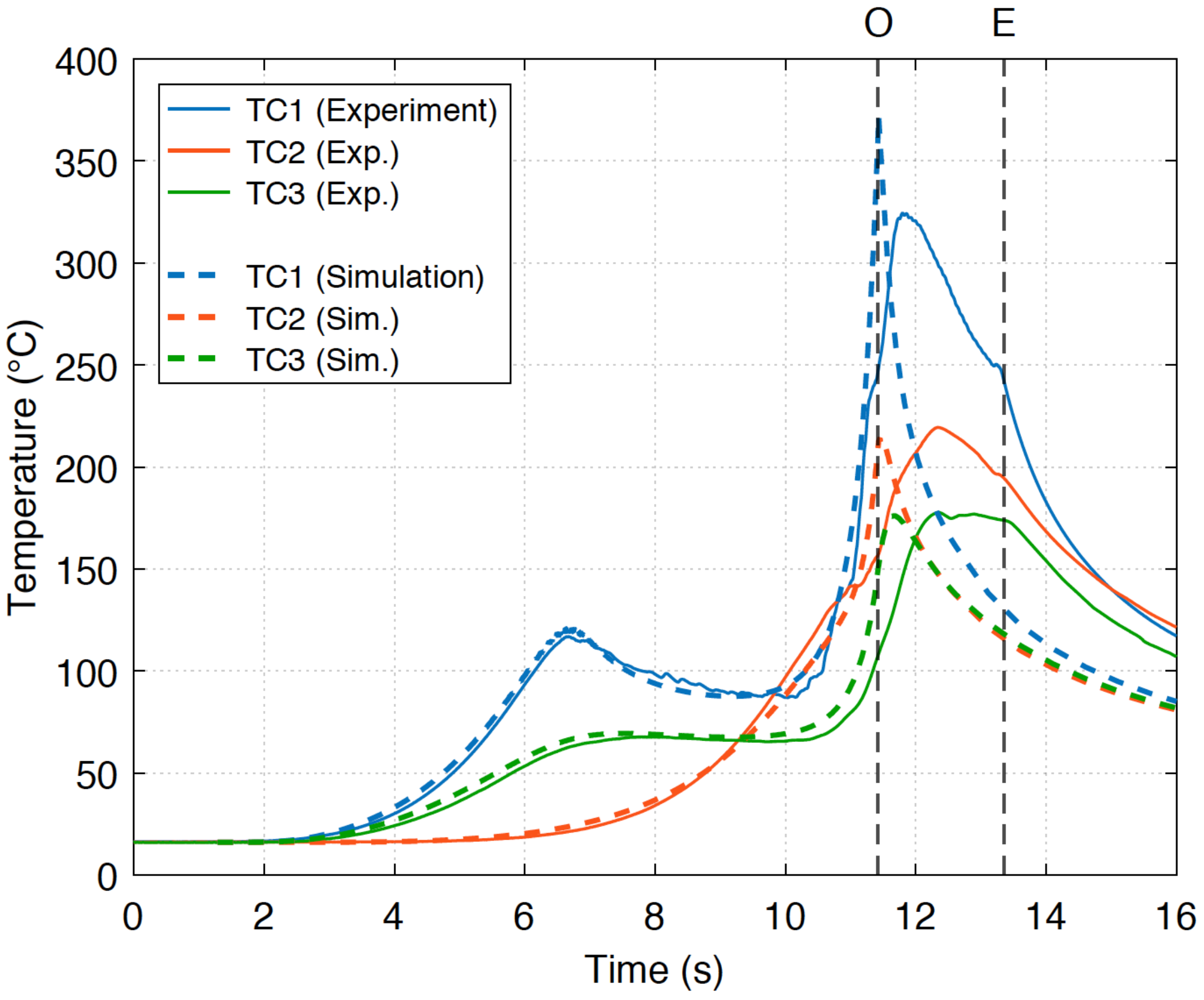
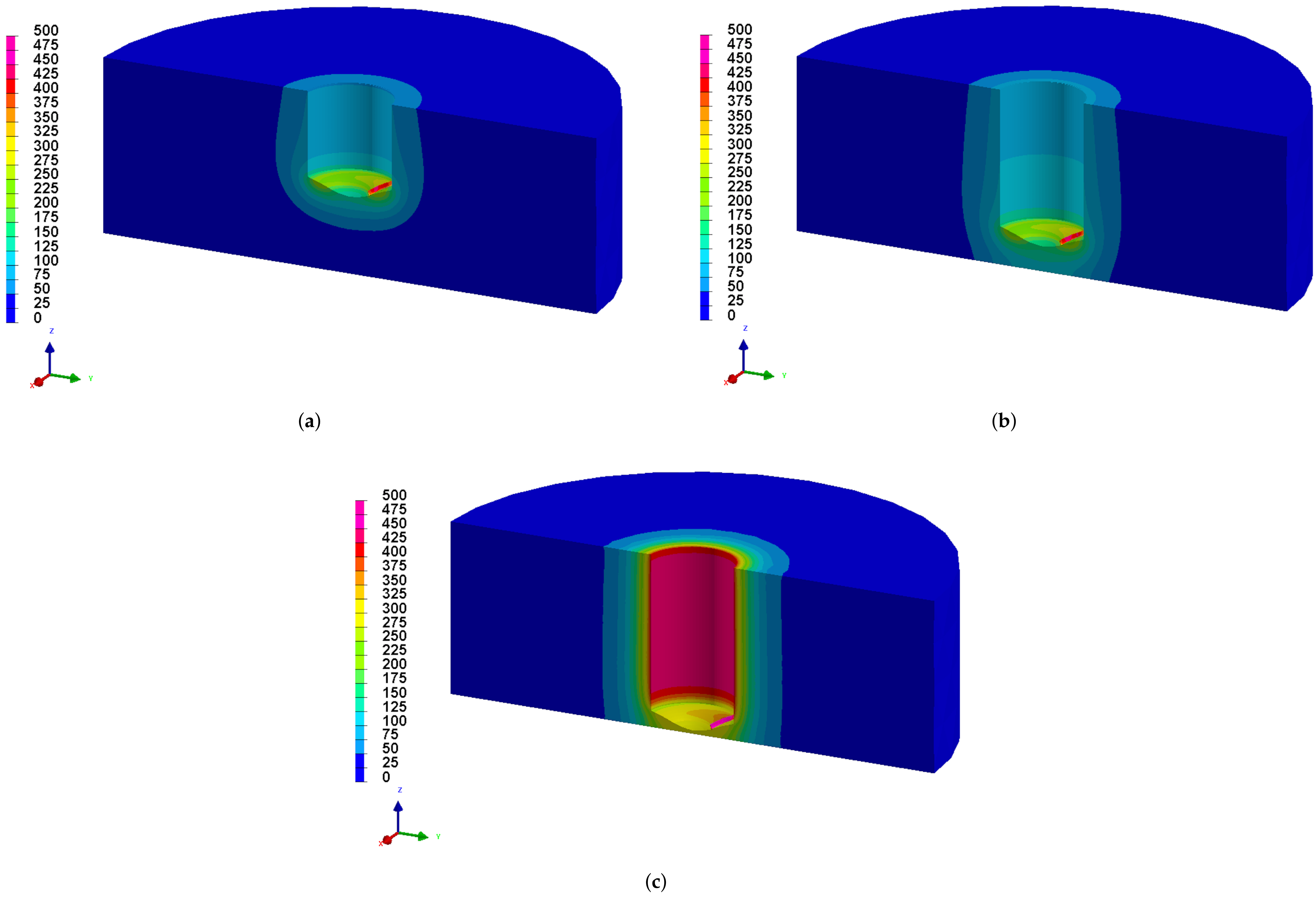


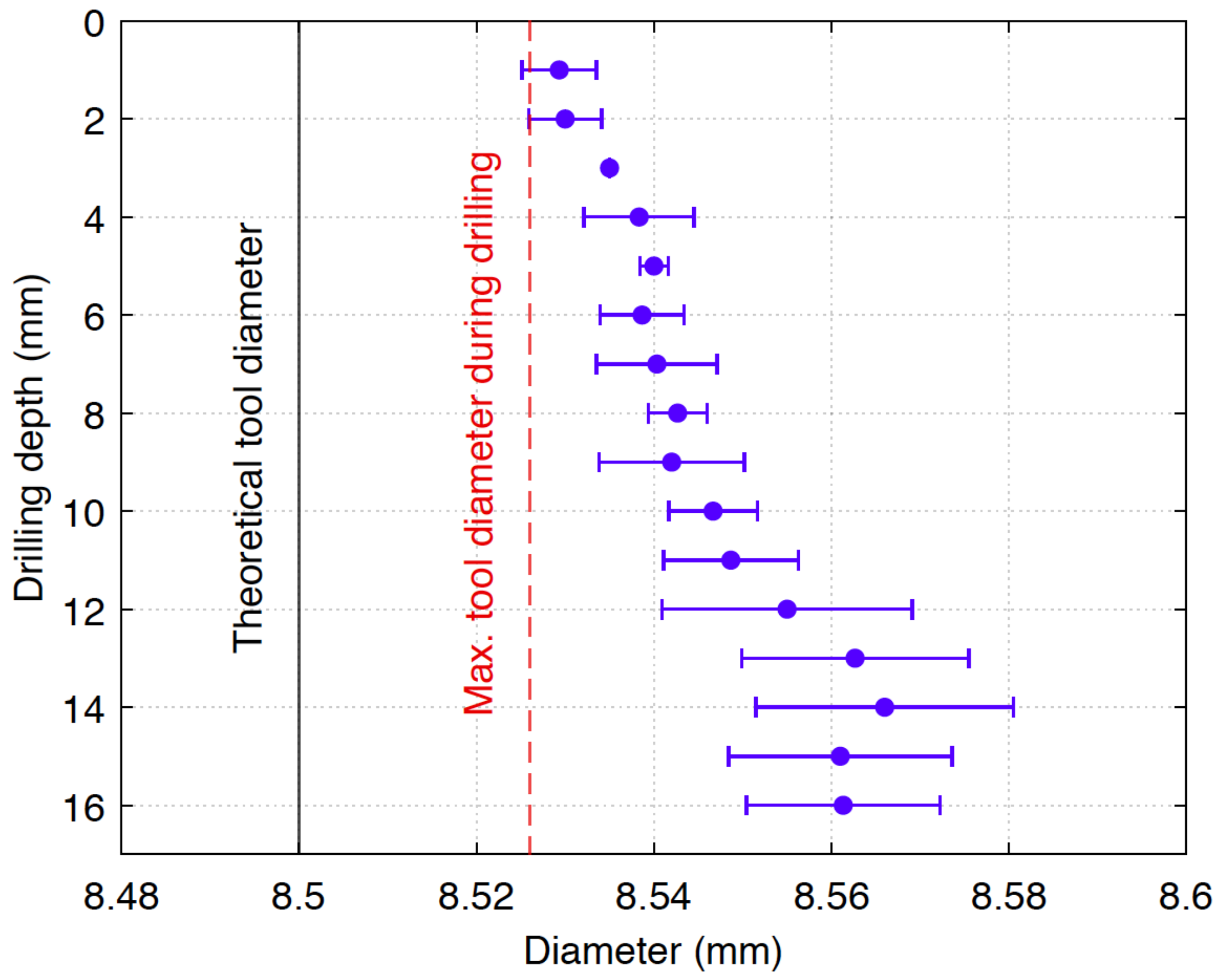
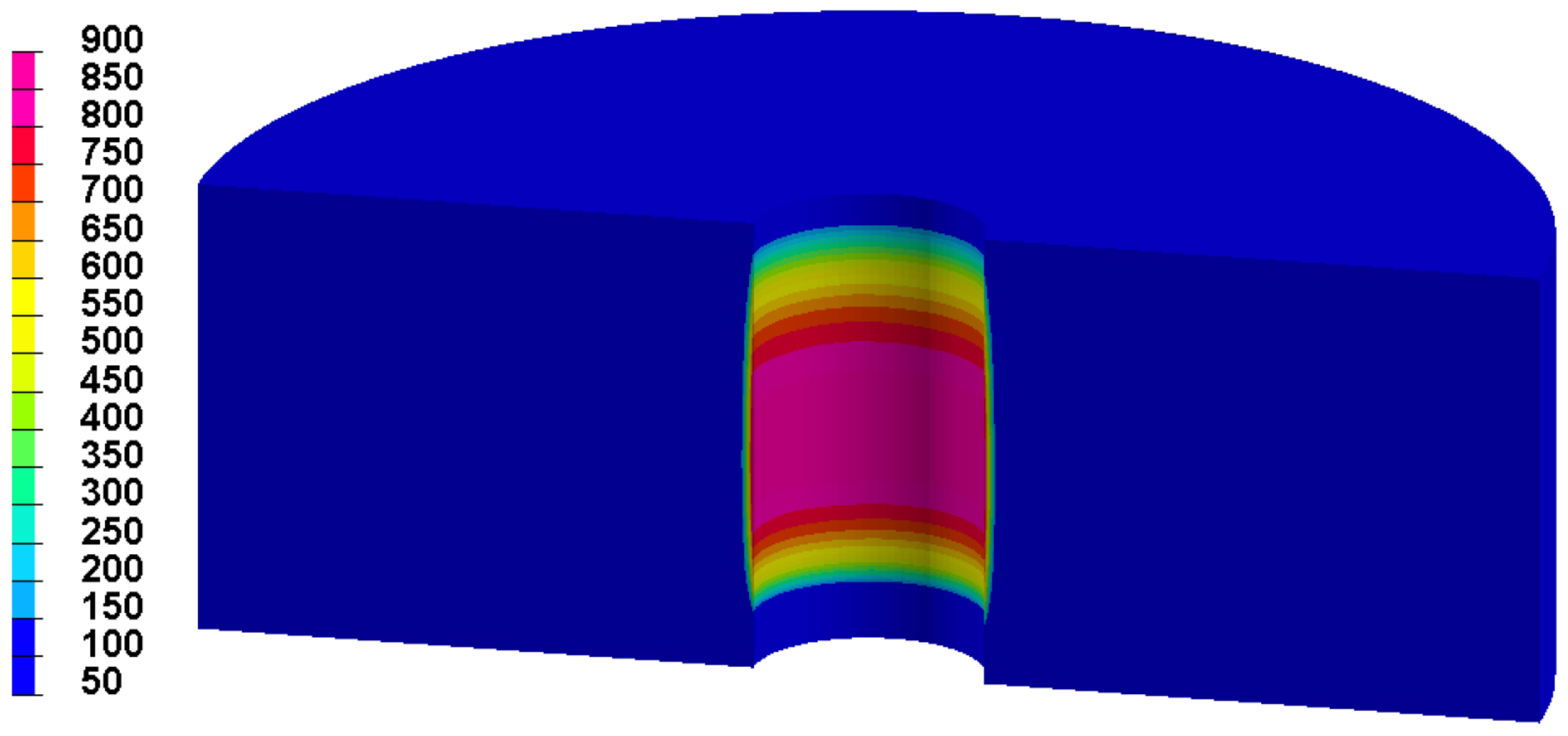
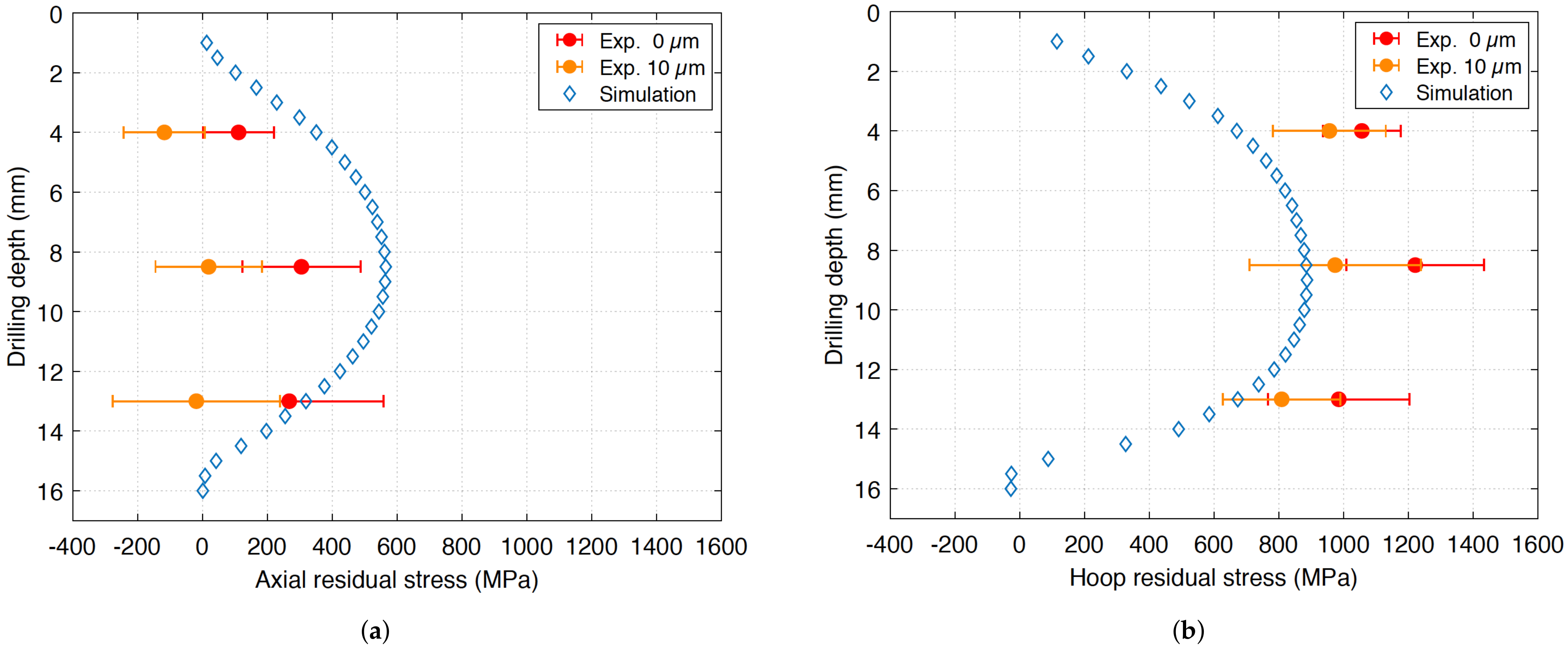
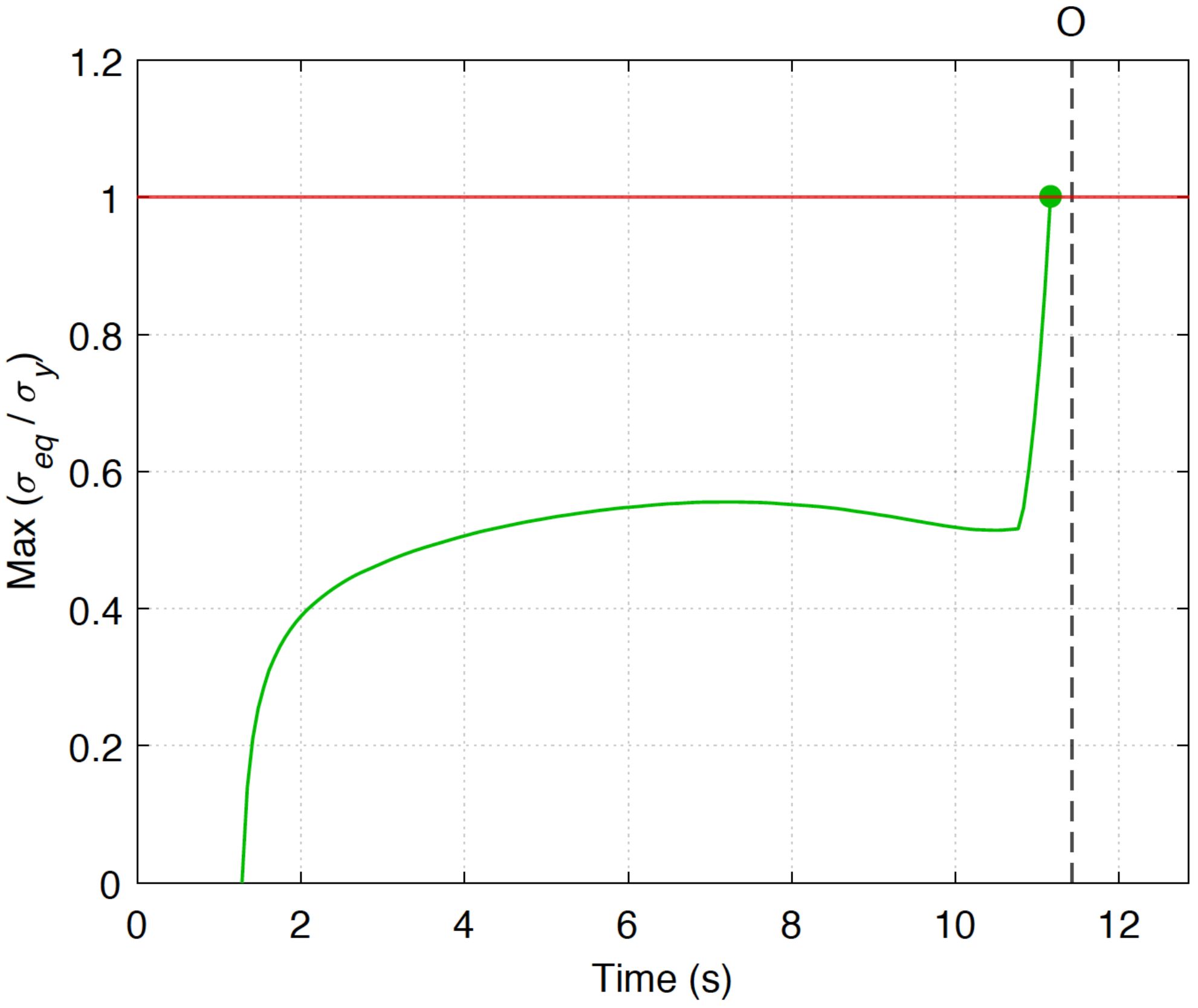
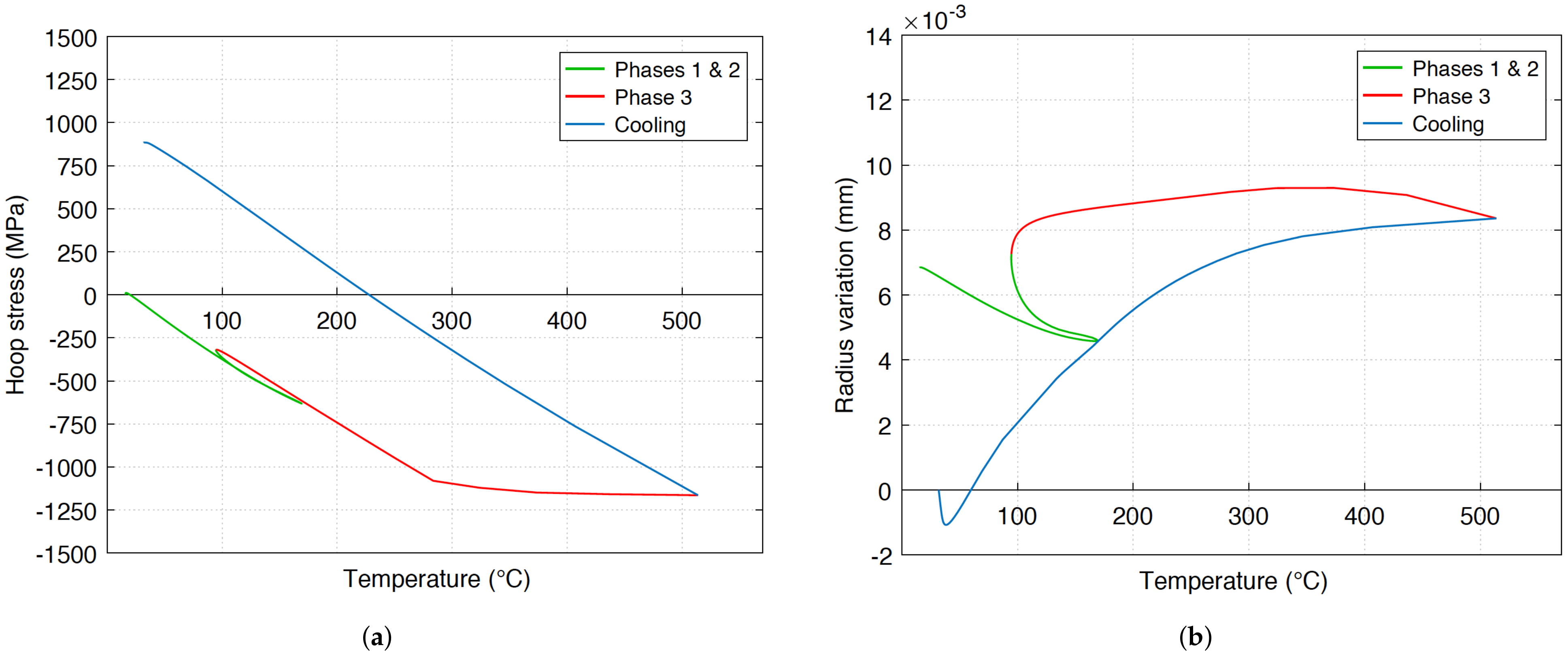
| Ni | Cr | Fe | Nb | Mo | Ti | Al |
|---|---|---|---|---|---|---|
| 50–55 | 17–21 | 15–21 | 4.75–5.5 | 2.8–3.3 | 0.65–1.15 | 0.2–0.8 |
| Analysis Point | 1 | 2 | 3 |
|---|---|---|---|
| Distance | 4 mm | 8.5 mm | 13 mm |
Publisher’s Note: MDPI stays neutral with regard to jurisdictional claims in published maps and institutional affiliations. |
© 2022 by the authors. Licensee MDPI, Basel, Switzerland. This article is an open access article distributed under the terms and conditions of the Creative Commons Attribution (CC BY) license (https://creativecommons.org/licenses/by/4.0/).
Share and Cite
Chenegrin, K.; Bouscaud, D.; Girinon, M.; Karaouni, H.; Bergheau, J.-M.; Feulvarch, E. Study of the Thermal History upon Residual Stresses during the Dry Drilling of Inconel 718. Metals 2022, 12, 305. https://doi.org/10.3390/met12020305
Chenegrin K, Bouscaud D, Girinon M, Karaouni H, Bergheau J-M, Feulvarch E. Study of the Thermal History upon Residual Stresses during the Dry Drilling of Inconel 718. Metals. 2022; 12(2):305. https://doi.org/10.3390/met12020305
Chicago/Turabian StyleChenegrin, Kévin, Denis Bouscaud, Mathieu Girinon, Habib Karaouni, Jean-Michel Bergheau, and Eric Feulvarch. 2022. "Study of the Thermal History upon Residual Stresses during the Dry Drilling of Inconel 718" Metals 12, no. 2: 305. https://doi.org/10.3390/met12020305






